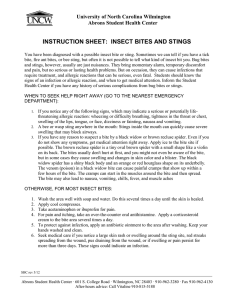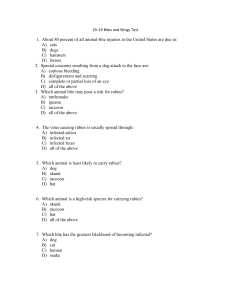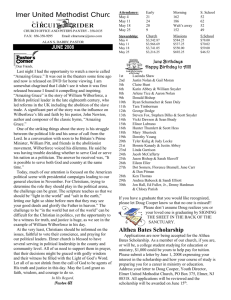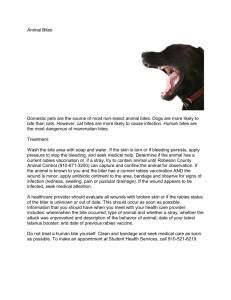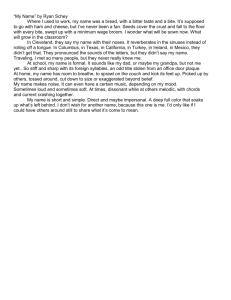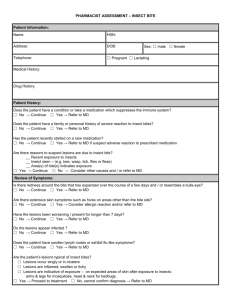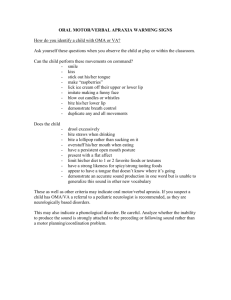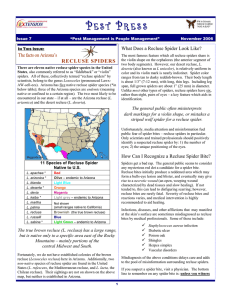Spider Bite - UNC School of Medicine
advertisement
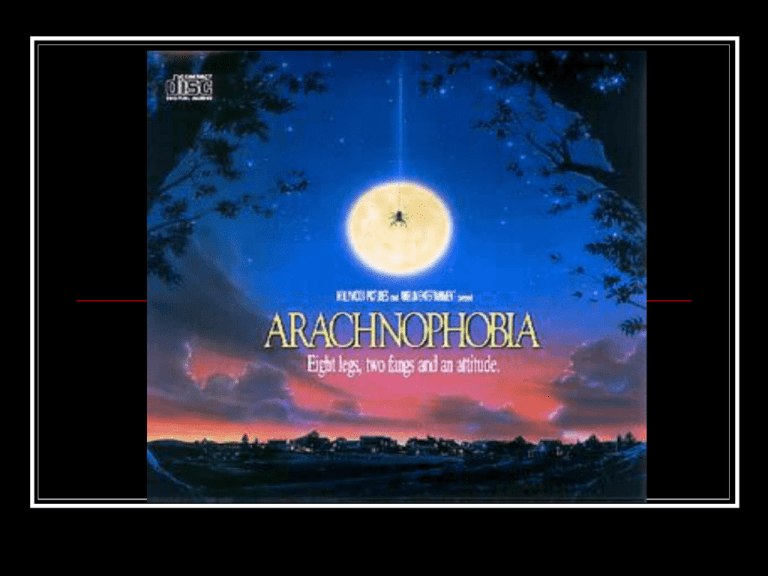
Chief Complaint: “Spider Bite” Jill R. Tichy, PGY III 10/2/2009 Spider bites are rare medical events Typically single lesions Do not occur in multiple family members Influence of Geographic Location Medically significant bites occur: - Black Widow (Latrodectus mactans) - Brown Recluse (Loxosceles reclusa) Presumptive Diagnosis of Spider Bite A spider must be observed inflicting the bite The spider was recovered, collected, and properly identified by an expert entomologist Brown Recluse Dwells in low traffic areas: Attics, basements and wooodpiles Brown Recluse Brown Recluse Bite Venom contains Sphingomyelinase B, a dermonecrotic factor Initial bite is painless Within hours site is painful and pruritic with central induration with zones of ischemia and erythema Most resolve within a few days In severe cases erythema spreads and center lesion becomes necrotic and hemorrhagic Brown Recluse Bite Fevers, chills, weakness, HA, nausea/vomiting, myalgias, maculopapular rash, and leukocytosis Rare complications: Hemolytic Anemia, DIC, thrombocytopenia, Hemoglobinuria, Renal Failure Treatment of Brown Recluse Bite Local Cleansing, Cold Compresses, Analgesics, Anti-histamines, Tetanus vaccine Equivocal data for Dapsone within 48-72 hours of bite may halt progression of necrosis Black Widow (Latrodectus mactans) Webs in dark spaces: barns, under rocks, plants, garages Prevalent in southeastern US Most common in summer to early autumn Initial bite unnoticed; May have two small fang marks; No local necrosis Alpha-latrotoxin binds to nerves and causes depletion Ach and Norepi Within 60 minutes of bite, painful cramps ensue Symptoms can wax and wane for several days Black Widow Bites Unremarkable local lesions Oftentimes systemic reactions Proximally spreading pain Localized diaphoresis Black Widow Spider Bite Black Widow Envenomation Local pain may be followed by localized or generalized severe muscle cramps and weakness. In severe cases, nause/ vomiting, dizziness and respiratory difficulties may follow. Abdominal Pain may mimic a surgical abdomen (peritonitis) Chest pain may be mistaken for myocardial infarction Labored breathing HTN Life-threatening reactions are generally seen only in small children and the elderly. Widow Spider Bite treatment Local Wound Care; Ice Packs Benzodiazepines Equine Antivenom (Antivenin) reserved severe cases usually seen in children and elderly due to high risk of serum sickness and anaphylaxis Treatment of Spider bites Most cause limited local inflammation: Analgesia and Antihistamine Brown Recluse: Standard local wound care and treat superinfection Black Widow: IV opiates; Benzodiazepines; Antivenin if severe reaction in children or elderly Consider other etiology unless definitive diagnosis Differential is broad Community-acquired methacillin-resistance Staphylococcus Aureus (CA-MRSA) Early Lyme Disease: Erythema Migrans Southern tick-associated rash illness (STARI) Herpes Zoster and Herpes Simplex (herpetic whitlow) Scorpion Bites Poison Ivy/ Oak Other insect bites and stings Cutaneous Lymphoma/Sarcoma CA-MRSA 1990s MRSA infections detected in the community in persons with no contact to health care system Strains demonstrate a global, geographic variation Small DNA cassettes mediating methacillin resistance differ from those associated with hospital acquired strains CA-MRSA: antibiotic therapy No clinical trials for optimal antibiotic therapy Avoid use of Clindamycin when local rates of resistance exceed 10-15% among MRSA isolates causing skin and soft tissue infections Anecdotal concern for Streptococcus A resistance to sole therapy of Doxycycline or Bactrim Possible recurrence rate is > 10% ? Intranasal bactroban “decolonization” efficacy With increasing prevalence of CAMRSA Management of skin and soft tissue infections requires knowledge of local rates of MRSA infection See UNC antibiogram for Community Isolates for Staphylococcus spp. Follow-up is essential UNC antibiogram for community isolate of Staphylococcus spp; 2008 All strains: 2216; coag neg: 145; ORSA: 1144; OSSA: 1072 Clindamycin: 66% strain susceptible to ORSA/ 74 % to OSSA Doxycycline: 94% susceptible to ORSA Bactrim: 94% susceptible to ORSA CA-MRSA Abscess +/- Purulent/Necrotic Skin lesion = I&D Culture Purulent Material Lesions < 5cm I&D sufficient Lesions > 5cm and/or systemic signs of infection = I&D + Abx References Harrison’s Principals of Internal Medicine; 17th edition NEJM; “Skin and Soft-Tissue Infections Caused by MRSA”; July 26, 2007 Consultant. Vol. 46 No. 12 Necrotic Lesions: Spider Bite-or Something Else? Journal of American Board of Family Medicine; 17: 220-226; 2004 UNC Antiobiogram 2008 Uptodate.com
